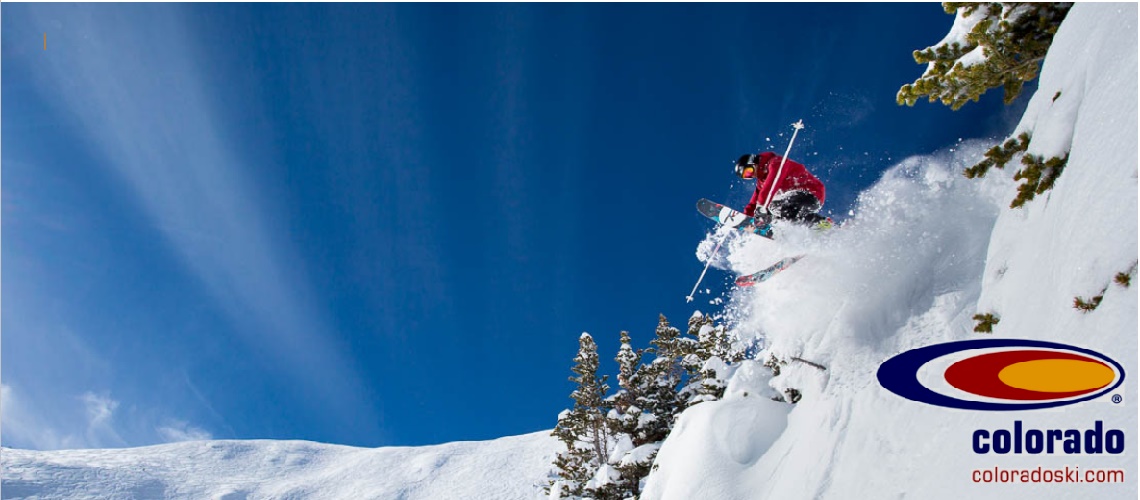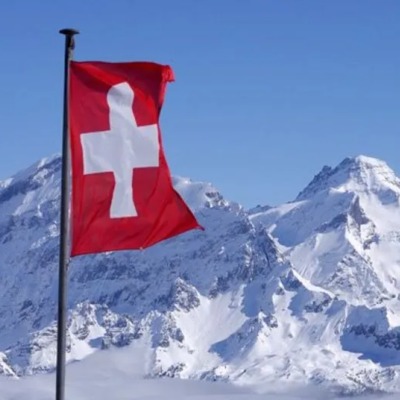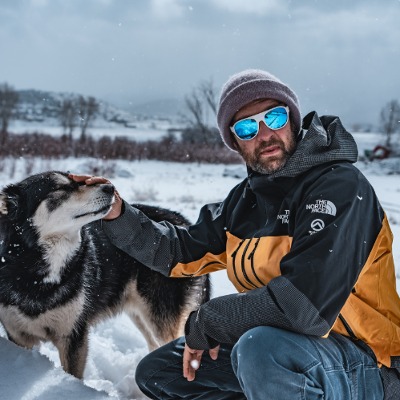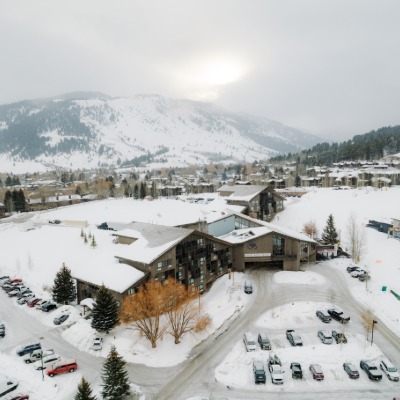COVID Guidance For Colorado Ski Areas Issued

Ski areas are a vital driver of the Colorado economy. During the COVID-19 pandemic, these areas also present unique challenges for controlling virus transmission. A successful ski season will require a strong partnership between ski areas, local governments, local businesses, and the state. These guidelines draw from existing and well-known COVID-19 guidelines for industries, establish some new baseline standards to create common expectations for mountain-specific activities, and support the local planning and implementation of area-specific plans critical to success. Together, we can prepare to maximize this critical sector of our economy while protecting the health of all Coloradans.
Process
- Ski areas should work closely with their Local Public Health Agency (LPHA) and home community to develop their individual plans.
- Ski areas should include the categories outlined in “Ski area and LPHA planning” within their ski area-specific plans. Ski area plans can and should go into further detail to address area- or local-specific issues in their plans.
- Ski areas must submit their plans to their LPHA for approval. Ski areas that exist in multiple jurisdictions (city and county, multiple counties, etc.) should consult with their home LPHA about including additional jurisdictions in the planning process.
- Once approved, the LPHA will submit the plan to the Colorado Department of Public Health and Environment (CDPHE) for final sign-off.
NOTE: These guidelines are secondary to immediate physical safety. In the case of extreme weather, sporting injuries, or any other risks of physical harm, addressing those safety concerns takes priority when in conflict with any of this guidance.
Ski area and LPHA planning
Ski area plan categories
Ski areas must develop plans in consultation with LPHAs, which must later be approved by LPHAs and CDPHE, that adequately address the issues and questions detailed below.
|
Requirement category |
Description of requirement |
|
LPHA collaboration |
How will the ski area collaborate with the LPHA and communicate capacity and anticipated attendance to the LPHA? |
|
Community engagement |
How will the ski area obtain regular community feedback on what is working and what is not working? How will the ski area coordinate with community leaders, local businesses, and lodging and housing entities to identify possible gaps in outbreak prevention systems, or where lines of responsibility are less clear? |
|
Communication with guests |
How will the ski area communicate state and local orders, guidelines, and safety protocols to guests both while at the resort and, where possible, for guest planning ahead of arrival? |
|
Physical distancing |
How will the ski area ensure physical distancing of 6 feet between parties on the mountain, in lift lines, in the base area, and in parking lots? What steps will the ski area take if they find that guests are congregating in base or other areas? |
|
Gondola operations |
How will the ski area configure gondola seating and operations to achieve adequate physical distancing? |
|
Mask-wearing |
How will the ski area ensure masks or face coverings are worn to the maximum extent practicable in both indoor and outdoor public spaces, ski schools, and while riding chairlifts or gondolas, recognizing exceptions for safety, dining, or while actively engaged in skiing, riding, or other distanced outdoor activities? |
|
Crowd and resource management |
How will the ski area manage crowd sizes (in staging areas, parking lots, base areas, and other common areas) and ensure that limited resources (restaurant space, indoor space, etc.) aren’t places of gathering or congregation? How will the ski area ensure physical distancing in restrooms and locker rooms, accounting for ventilation and avoiding crowding in lines or waiting areas? |
|
Health screenings and symptom tracking |
How will the ski area approach health screenings for employees and guests, ensuring that employees and guests who are sick, exhibiting symptoms, or have been recently exposed to COVID-19 are not allowed to participate? |
|
Ski school policy |
What adjustments will the ski area make to ski school and private or affiliated on-mountain operators (such as private instructors, adaptive or non-profit programs, or external teams/organizations) to ensure public health safety and prevent COVID-19 transmission to the greatest extent possible? |
|
Enforcement |
How will the ski area/resort ensure compliance with state and local orders and guidelines, as well as area-specific policies, and enforce policies with guests and staff? |
|
Employee housing |
How does the ski area plan to ensure safe employee housing environments, mitigate risks between employee housing and work, quickly communicate with staff regarding updated directives and precautions, and ensure that employees that test positive can isolate effectively and safely? |
|
Isolation housing |
How will the ski area work with the local community in community-wide efforts to create opportunities for visiting guests to safely isolate and quarantine themselves in the event that they test positive or need to quarantine during their stay and cannot travel? |
|
Après-ski |
How does the ski area plan to coordinate with local partners on après-ski gatherings and activities to ensure that distancing, masking, and capacity requirements are maintained? |
|
Extreme weather events |
How does the ski area plan to coordinate with LPHAs in case of an extreme weather event or emergency? |
|
Continuous learning and scaling of operations |
How will the ski area be prepared to scale operations up or down depending on epidemiological developments due to COVID-19, or where the host community is on the dial? How will the ski area learn from its initial opening and improve protocols based on experience? |
|
Cancellation and postponement policies |
How will the ski area address cancellation and postponement policies so that guests do not feel pressured to come if they are sick? How will the ski area communicate to guests that they should reschedule their vacation if they begin to experience any symptoms before traveling? |
|
Unique on-mountain work environments |
How will the ski area ensure adequate physical distancing in working environments that don’t directly fit the state guidance for office spaces, such as lift operation huts, ski patrol cabins, and other indoor, on-slope structures? |
Ski area-specific state guidance
Communications to skiers, riders, and visitors
In general, communication with skiers and visitors should start before they arrive at the ski area to the greatest extent possible. State and local COVID-19 requirements should be prominently displayed on ski area websites and shared when reservations are booked, when arriving at the resort, in lodging facilities, etc.
Areas should communicate:
- Expectations to wear masks and physically distance.
- Require mask-wearing in accordance with the ski area’s plan, encouraging mask-wearing in all indoor and outdoor public spaces, recognizing exceptions for safety, dining, and while individuals are actively engaged in skiing, riding, or other distanced outdoor activities.
- Ensure physical distancing in all public indoor and outdoor areas.
- How to use prevention tools like Exposure Notifications.
- Quarantine requirements in case of exposure.
- Communicate state and local orders that require individuals who test positive for or have been exposed to COVID-19, while in Colorado, to extend their stay at their own expense to complete isolation or quarantine requirements.
- What dial level the county currently is in and what that means. Out-of-state visitors should know that capacities may vary across counties and resorts.
Ski areas should adopt, promote, and coordinate on enforcing the statewide COVID-19 Commitments to Containment:
- Wear a mask in public places.
- Physically distance.
- Limit group sizes.
- Isolate yourself if you have symptoms or test positive.
- Regularly clean high-touch surfaces.
- Screen for symptoms.
- Protect at-risk people.
Slope operations, including gondolas, chairlifts, and staging areas
- Promote remote purchasing of lift tickets online or by phone, instead of in person.
- Symptom and exposure screening questions (in person) or agreements to self-monitor (remote) prior to patron arrival at the ski area is encouraged.
- Require mask-wearing in accordance with the ski area’s plan, encouraging mask-wearing in all indoor and outdoor public spaces, recognizing exceptions for safety, dining, and while individuals are actively engaged in skiing, riding, or other distanced outdoor activities.
- Require masks in lines for and while riding on chairlifts and gondolas.
- Display signage reminding guests of distancing and masking policies.
- Ski area guests will not be required to ride on a chairlift or gondola with people outside of their party. Individuals who are not from the same party may ride a chairlift together with a minimum of one seat separating the unrelated individuals or parties; however, ski areas should generally encourage more space between different parties when possible.
- Gondolas should keep windows open, even in inclement weather. Gondolas should be limited to no more than two separate parties with adequate spacing, and not more than 50% capacity if more than one party rides a gondola together (single parties may reach full capacity). Specific spacing configurations and requirements should be addressed with the LPHA in the ski area plan. Consider posting reminders of these requirements within gondola cabins.
- Ensure 6-foot spacing between separate parties, in all directions, in chairlift and gondola lines by employing tactics such as extending staging areas and marking 6-foot increments for suggested standing. Instances where this requirement is unworkable should be addressed in the ski area’s plan and discussed with the LPHA.
- Consider the typical volume of visitors, and whether crowd volume management tactics (such as reservations, congestion-based pricing, and/or remote ticket sales) are needed to successfully implement physical distancing.
- Safety on chairlifts is paramount, and maintaining seating distance is not required for ski school groups with students too young to ride chairlifts by themselves safely, or those who require additional assistance or have additional needs to ride chairlifts safely.
Parking lots
- Require appropriate physical distancing and mask-wearing.
- Remind guests to stay in small groups, limited to members of their party.
- Consider increasing base area drop-off opportunities and locations and encouraging drivers to be the only member of their party to use transit or shuttle systems after parking.
Ski school and private lessons
- Limit ski school cohorts/groups to no more than 10 people, not including instructors, and consider maintaining smaller cohort/group sizes when possible.
- Consider limiting ski school activities and kids’ programming on weekends when resort volume will be higher.
- Cohorts should remain with their group and not mix with other groups or instructors during structured time or free time, including on chairlifts and gondolas and in lines. Safety on chairlifts is paramount, and maintaining seating distance is not required for ski school groups with students too young to ride chairlifts by themselves safely, or those who require additional assistance or have additional needs to ride chairlifts safely.
- Require instructors and students 11 years of age and older to wear masks in accordance with the ski area’s plan, encouraging mask-wearing at all times while recognizing exceptions for safety, dining, or while individuals are actively engaged in skiing, riding, or other distanced outdoor activities.
- Students should receive symptom and exposure screenings or questionnaires upon their arrival to the ski area for ski school. They should be sent home if symptoms are detected. Encourage students to have their temperatures taken prior to arriving at the resort. If symptoms are detected, the student must stay home.
- The ski area should collect and maintain contact information for all students for contact tracing purposes in the event that a student or instructor tests positive for COVID-19.
- Promote rescheduling and refund flexibility to encourage guests to stay home when sick.
- Consult these additional resources and guidance for school and child care settings:
Extreme weather events and other emergencies
- In the case of an extreme weather event, injury, or other emergency (including but not limited to severely low temperatures, high winds, exceptionally intense snow, or imminent avalanche danger), the ski area may prioritize the immediate safety and sheltering needs of guests and staff when in conflict with these COVID-19 guidelines.
- In the case of such an event, the ski area plan should, in coordination with the LPHA, address how to document the contact information of guests and staff of multiple different parties who shelter together in one space during an emergency or extreme weather event to ensure contact tracing ability.
- The ski area must coordinate with and report to their LPHA when the ski area invokes the need, due to an emergency, to shelter guests and employees despite COVID-19 guidelines. This reporting should include the date, time, duration, event type, location(s), individuals impacted/included, and details of the event.
- During an emergency requiring sheltering of guests and employees, COVID-19 guidelines for distancing, masks, and handwashing should be followed to the greatest extent possible.
Relevant State Guidance
Business operations and employer responsibilities
General
- Work with LPHA to identify strategies to support contact tracing efforts when necessary (e.g., collecting and producing guest information)
- Review and utilize the following general guidelines in the ski area’s plan development:
Facility operations
- Require mask-wearing in accordance with the ski area’s plan, encouraging mask-wearing in all indoor and outdoor public spaces, except while individuals are actively engaged in skiing, riding, or other distanced outdoor activities.
- Follow CDPHE and CDC guidance for cleaning and disinfecting public spaces.
- Follow CDPHE ventilation guidance to ensure proper ventilation.
- In the event that a ski area needs to close and halt operations prior to the end of its season due to COVID-19, that ski area must notify the county sheriff and local search and rescue.
Staff/employees
- Provide COVID-19 protocol training as part of employee onboarding and repeat periodically throughout the winter season.
- Employers and employees should be familiar with the CDPHE Workplace Outbreak Guidance and apply all recommendations for prevention and mitigation outlined in that document to their operations.
- Train all staff to monitor guest compliance to distancing and masking policies, and develop a protocol for responding to guest policy breaches.
- Implement symptom and exposure screening and monitoring protocols, including workplace temperature monitoring and symptom screening questions where possible (Additional Guidance). Prohibit sick employees from coming to work, and encourage sick employees to use the CDPHE symptom support tool.
- Employees must comply with LPHA quarantine and isolation letters and orders.
- Wherever possible, group employees into teams or shifts (cohorts) and maintain cohort composition through the season to limit mixing between different cohorts.
- Consider that social activities and living arrangements may also contribute to mixing and identify ways to mitigate these activities while planning accordingly for situations where a group of employees may be quarantined.
- Consider contracting with a lab to conduct regular testing of staff.
- Encourage all employees to get flu shots. Host a free vaccine clinic if possible.
Public and hired transportation
- Review the following resources regarding public and hired transportation:
- Maximize ventilation at all times, including opening windows even during inclement weather.
- Consider increasing base area drop-off locations and encouraging guests arriving by car to be the sole member of their party to use transit or shuttle systems after parking.
Restrooms and locker rooms
- Ski area plans should include detailed plans for restrooms and locker rooms that address:
- Limited capacity and adequate physical distancing.
- Ventilation.
- Avoiding crowding in waiting lines or waiting areas.
- Require masks in all public and staff restrooms and locker rooms.
- Post reminders of mask-wearing, physical distancing requirements, and importance of handwashing with soap within and outside of restrooms and locker rooms.
- Establish staging areas for restroom lines that allows for adequate physical distancing.
- Maximize ventilation.
- Consider employing the following tactics:
- Adding additional handwashing areas outside of restaurants.
- Providing port-o-potties to reduce indoor congestion.
- Blocking off certain stalls to reduce the number and proximity of people in a restroom at one time.
- Disabling air dryers.
Shops and rental services
- All retail and rental shops must adhere to retail guidance and capacity limits based on the dial level.
- Encourage reservations and pick-up time windows for rental equipment to manage customer congregation.
- When possible, provide rental pickup outdoors or through a drive-up site.
- Require masks, reduce contact, and minimize interactions when fittings are necessary.
- Utilize techniques like floor decals, one-way traffic, and plexiglass screens at checkout to maximize physical distancing.
- Review and utilize the following general guidance in the ski area’s plan development:
Restaurants and other dining facilities
- Adhere to all restaurant guidance, including the appropriate capacity limits for the dial level.
- There are no capacity limits for outdoor dining. Outdoor dining spaces must allow for 6 feet between parties, per local zoning.
- Utilize tactics to reduce density indoors, such as maximizing outdoor dining opportunities, encouraging guests to pack their own lunches, providing pre-ordered and grab-and-go meals, or encouraging restaurants to take dining reservations.
- Review CDPHE’s guidance for outdoor structures for restaurants and events. Consider weather-resistant structures with appropriate ventilation and space heaters to increase outdoor capacities.
Office areas
- All office spaces must adhere to office-based business guidance and the capacity limits based on the dial level. Nontraditional on-mountain work environments (lift huts, ski patrol lodges, etc.) should be addressed with LPHAs in ski area plans.
- Maximize use of telecommuting and developing in-office rotation. Allow for flexible work schedules. Minimize the number of in-person meetings.
- Keep a record of employees (i.e. sign in/out) to enable contact tracing.
- Encourage the use of digital files rather than paper formats.
- Ensure clear planning, preparedness, and organization in the workplace. This includes assigning a COVID-19 coordinator to facilitate planning and communication, developing a plan for resources like cleaning supplies and regular (daily or weekly) internal communication, planning for employees to be out of the office for quarantine or while caring for others, and considering how new precautions will impact workflow.
Hotels and lodging
- Ski area plans should address coordination with community leaders, local businesses, and lodging and housing entities, particularly at base villages, to identify possible gaps in outbreak prevention systems or where lines of responsibility are less clear.
- Ski area-owned or -managed après-ski venues like hotel lobbies, bars, or restaurants should manage guest volume, limit congregating, and adhere to physical distancing requirements and all relevant state guidance in accordance with the area’s current level on the state dial.
- Ski area-owned short-term lodging should adhere to all short-term rental guidance and CDC COVID-19 Employer Information for Hotels, Resorts, and Lodges, including:
- Minimizing face-to-face interactions by implementing no-contact check-in procedures when possible.
- Providing generous and flexible cancellation policies so that if guests start experiencing symptoms, are sick, or have been in close contact to someone who is sick, they can cancel.
- Training staff to collect all guests’ contact information and prepare to support local public health contact tracing efforts if exposures occur.
- In consultation with LPHAs, work with the local community in any community-wide efforts to create opportunities for guests to safely isolate and quarantine in the event that they test positive during their stay and cannot travel without disrupting upcoming bookings.
Employee housing
- Congregate housing is one of the biggest transmission risk factors. Review and utilize the CDC guidance for congregate housing while making a plan to minimize risk to workers in shared living facilities.
- Consider aligning employee housing cohorts with on-mountain employee cohorts to reduce the number of people exposed in an outbreak.
- Maintain isolation housing in order to safely quarantine and isolate COVID-19 positive employees as needed.
- Ski areas providing employee housing shall establish a plan for those employees requiring support services such as medical services and medication, transportation, and meal support when subject to quarantine or isolation.
Warming spaces
- Ski areas that make indoor space available for warming should use CDPHE’s indoor events guidance and follow the associated capacity restrictions based on the county’s dial level.













